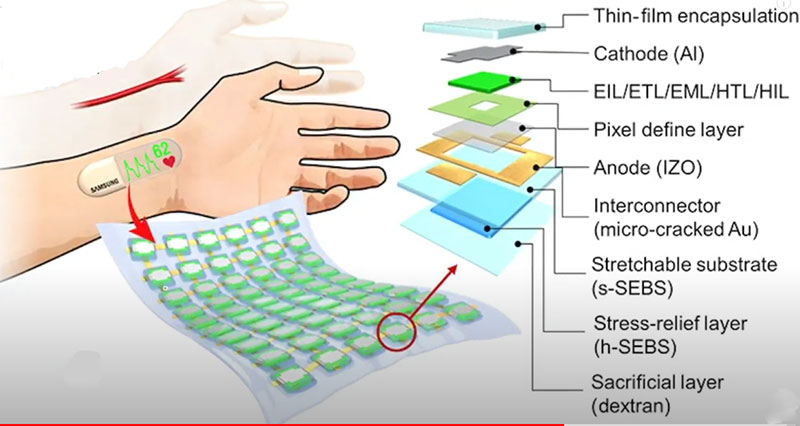The new flexible OLED display developed by Samsung could be invaluable to future wearable devices. What are the challenges faced by wearable devices, and what could be the practical applications for Samsung’s new flexible display?
What are the challenges faced by wearables?
Wearable tech is one of the fastest-advancing sectors of the wider technology industry, now outpacing the development of smartphones. Design is a key factor for the devices of the future. The more devices blend in with potential users’ clothes and accessories, the quicker they will be adopted.
Related Plastic Logic’s New Flexible Color Display Set To Revolutionize Wearables
Wearables need to conform to the wearer. The ZYPAD watch was a rugged computer that could be worn on the wrist. However, it was bulky and heavy. There are other medical wearables that function very well but not flexible enough for the patient.
Wearable devices need to be comfortable. Consumers prefer large displays but the device will be unpopular if it is too rigid and uncomfortable.
A device that can conform to the human body while remaining functional is only practical if it can be used many hundreds of times with little to no damage,” writes Robin Mitchell in ElectroPages.

Samsung’s flexible OLED display
Samsung’s newly announced OLED display can be stretched up to 30%. One of the biggest achievements of this research was that the team was able to modify the composition and structure of ‘elastomer’, a polymer compound with excellent elasticity and resilience, and use existing semiconductor manufacturing processes to apply it to the substrates of stretchable OLED displays and optical blood flow sensors for the first time in the industry. The team were then able to confirm that the sensor and display continued to operate normally and did not exhibit any performance degradation with elongation of up to 30%.
What are the practical applications of Samsung’s flexible OLED display?
Samsung’s new display has a low resolution, but its flexibility and ease of use proves that it could be a good candidate for future wearables. The stretchable sensor was made in a way that makes continuous heartbeat measurements possible with a high degree of sensitivity compared to existing fixed wearable sensors. It could also be used in smartwatches and smartphones.
Related Nubia Launches Futuristic Flexible Display Smartwatch
“Our research is still in the early stages, but our goal is to realize and commercialize stretchable devices by increasing system resolution, stretchability, and measurement accuracy to a level that makes mass production possible,” said principal researcher Jong Won Chung, co-first author of the paper. “In addition to the heartbeat sensor that was applied in this test case, we plan to incorporate stretchable sensors and high-resolution freeform displays to enable users to monitor things like peripheral oxygen saturation, electromyogram readings and blood pressure.”












